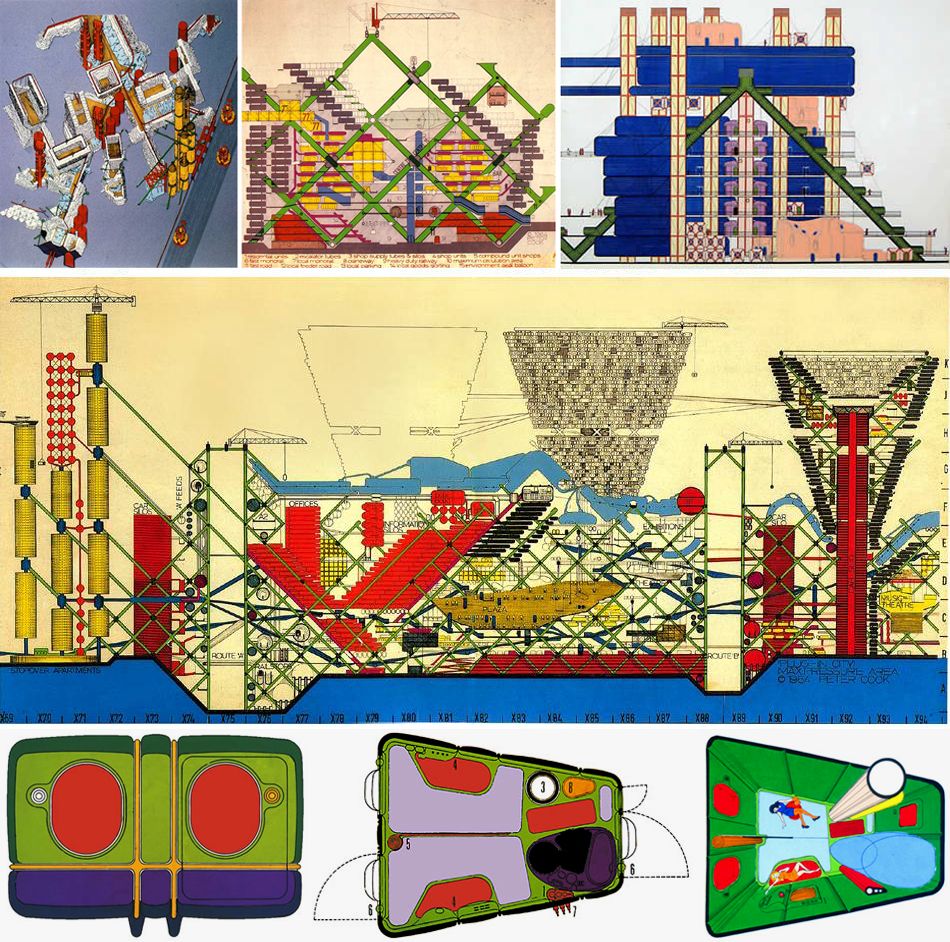skip to main |
skip to sidebar
I watched Star wars last week, and I was quite disappointed with the way the directors had envisioned Space. To me Space equals no gravity, yet in the movie, the connection to the ground was still there. The means of transportation extended upwards yet remained two dimensional, the pods circulated in horizontal layers, as if the ground had been multiplied, but we could only see the "real" ground. The creatures also were mere modifications of the appearance of a human, they were people with wigs and make up and things. What if creatures in space didn't need legs? or arms? or a face? What if the spaces had released themselves from the ground, from gravity, to set a new way of movement, of experience, one that did not rely on a single plane of reference ( the ground)? Could the pod have become a shelter, a sphere, a movable habitat? A while ago I mentioned something about creating a world with no reference. I would like to think that we could think about something without reference to anything previously thought. Architecturally speaking, I would like to think that we could start to think about spaces in a different way, so that they start to reflect the reality and possibilities of our time, of our lifestyle, of the future. The traditional method of thinking about space and architecture relied on the plan, a two-dimensional representation of a cut plane. This implied thinking about space more or less as an extrusion of this representation, and reduced the third dimension to height. The modern period pushed space a bit further than the plan, thinking about it in section, and emphasizing on three-dimensional elements, the architectural promenade, the pilotis, the facade, arranged within a larger composition. Architecture was perceived as an accumulation of objects, or rather as an arrangement of objects, creating relationships of void to mass, exterior to interior, yet still within a larger framework that somehow still retained the boundaries of an extruded two-dimensional rectangle, or square. In other words, architecture was geometric, and if we went back to the tiniest element of any space, the third dimension was always an extrusion, the height that transformed a plane into an object. Today, architecture has moved to become concerned with process; it is no longer a static object that we believe can tell the truth about our world. Life has become more dilute than ever before, connectivity, technology, and rapid scientific progress have rendered time immaterial and there are no more limits to what we can achieve. New tools allow us to think in new ways, and to create spaces that could not have been conceived before. Yet this potential has not been exploited, and architecture, especially in Lebanon has remained the same for the past fifty years at least. Haphazard buildings grow along the sea front, inside the city fabric, on the hills and mountains, all unconcerned with the way the country is transforming, the way we live, and what we want our country to become. Architecture is reduced to the extrusion of buildings, the arrangement of which we call a city. I would like to challenge this dire state of what has become the city, and think about what living today in Beirut, Lebanon or on Planet Earth really means. To think about a certain lifestyle, and also an added value to life, one that is not centered on working, eating, sleeping, and the appearance of luxury, but rather on real luxury. That is the luxury of time, the luxury of space, the luxury of imagination.
 Yona Friedman, Spatial City, 1923
Yona Friedman, Spatial City, 1923  Peter Cook / Archigram, Plug-In City , 1964
Peter Cook / Archigram, Plug-In City , 1964
 London of Tomorrow Visual Manifesto AA VSP 2009
London of Tomorrow Visual Manifesto AA VSP 2009
 Yona Friedman, Spatial City, 1923
Yona Friedman, Spatial City, 1923  Peter Cook / Archigram, Plug-In City , 1964
Peter Cook / Archigram, Plug-In City , 1964 London of Tomorrow Visual Manifesto AA VSP 2009
London of Tomorrow Visual Manifesto AA VSP 2009
 Yona Friedman, Spatial City, 1923
Yona Friedman, Spatial City, 1923  Peter Cook / Archigram, Plug-In City , 1964
Peter Cook / Archigram, Plug-In City , 1964 London of Tomorrow Visual Manifesto AA VSP 2009
London of Tomorrow Visual Manifesto AA VSP 2009
0 comments:
Post a Comment